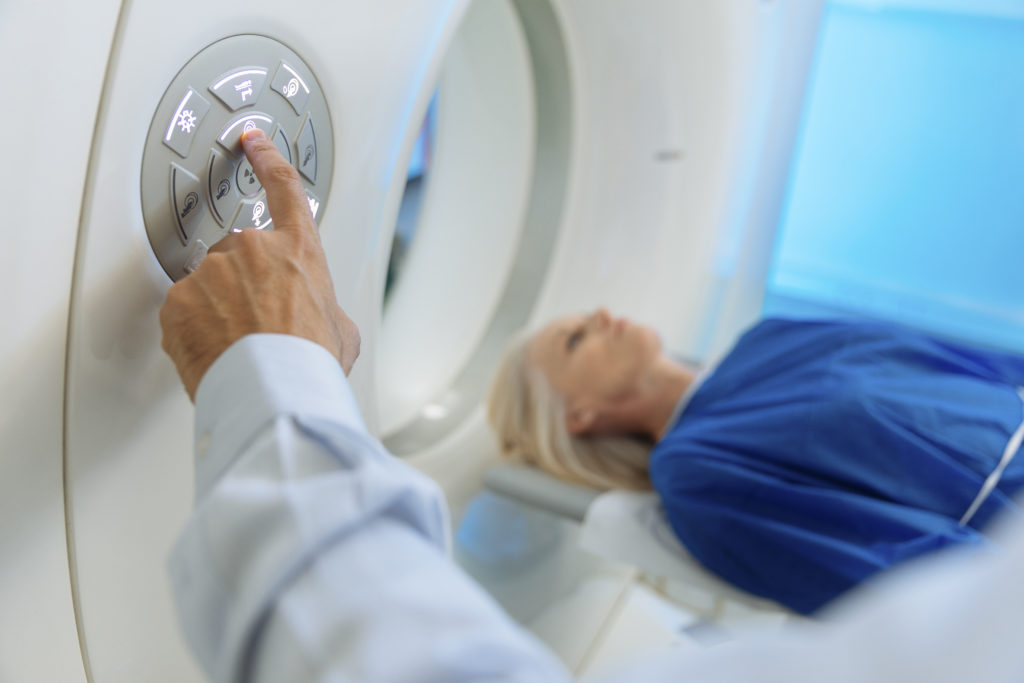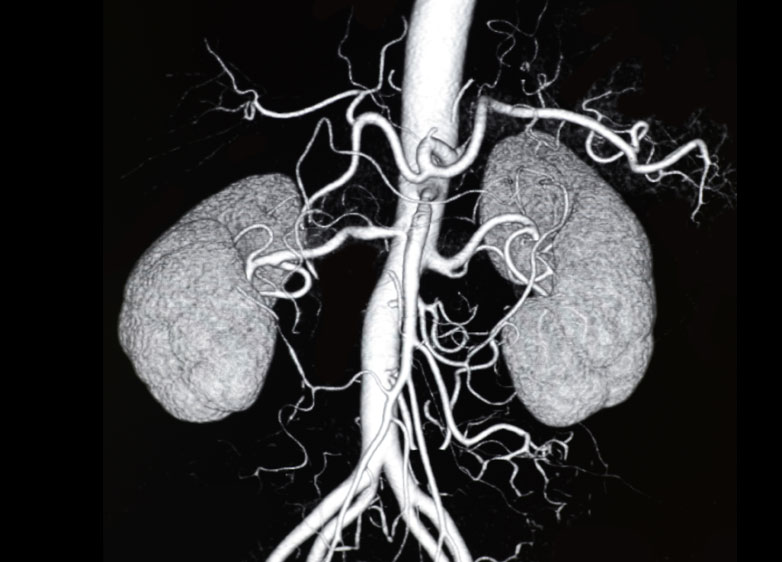CTA
What Is CTA?
Computed Tomography Angiography is a medical examination we perform to obtain accurate images of tissues and blood vessels that require observation.
Angiography is a method of imaging that supports the diagnosis and treatment of vascular conditions. Our Humble facility performs Computed Tomography Angiography (CTA). CTA involves the use of contrast media in order to enhance the appearance of the desired vessels when imaged with Computed Tomography or CT imaging.

Am I a Candidate for a CTA Exam?
We perform an Angiography to observe blood vessels in the kidneys, lungs, heart, brain, or other areas for abnormalities such as:
- Injured blood vessels.
- Narrowed blood vessels (atherosclerosis).
- Aneurysm, an enlarged blood vessel.
- Abnormal formations of blood vessels in the brain.
- Blood clots in the lungs or other areas.
- Tumor (angiography observes the blood vessels that feed the growth).
The data that we gather during CTA may facilitate cancer treatment or may precede kidney transplant surgery. Findings may also help patients avoid a heart attack or stroke by identifying serious risk factors that we can treat preventatively.
How to Prepare for a CTA Exam
Referring physicians may provide details for preparation, such as:
- Do not eat 3 hours prior to CTA examinations. Clear liquids are acceptable including water and broth.
- Continue taking prescribed medications as usual prior to the CTA scan.
- Avoid exercise and caffeine prior to chest CTA.
- It is recommended that jewelry be left at home.
- The patient should wear comfortable clothing, but we can provide a patient gown for this exam.
Patients who believe they may be pregnant should inform their doctor and GO Imaging before scheduling their CTA exam. Our care team offers an alternative exam to pregnant patients or patients who believe they may be pregnant in lieu of a CT. Individuals with abnormal kidney function, diabetes, or a history of allergic reaction to contrast media may receive special instructions from their physician.

CTA Examination Procedure
Our care team routinely performs CTA exams in our comfortable outpatient facility in Humble using a CT scan machine and contrast media. Prior to examination, the technologist is happy to answer questions and help you onto the exam table.
- It is important to remain absolutely still during the CTA.
- The technologist performs the CT scan from an adjacent room, where there is direct line-of-sight to the machine.
- An audio system enables patients to speak with their technologist if necessary.
- As the CT machine rotates around the exam table, it is normal to hear chirping sounds.
- The technologist may request that a patient hold their breath for short periods during the exam.
- Some patients feel slightly affected by the contrast material that we inject via IV. This may include a metallic taste in the mouth, the sensation of flushing, slight nausea, or a mild headache. These effects usually pass within a few moments.
- At the completion of the examination, the table will slide out of the machine and the doctor will remove the IV.
Patient Testimonial
First thank you all for being so nice and professional upon my visit! You all made everything so easy and comforting especially the techs due to me having issues with closed spaces…..thank you! Thank you all so much for your help, now I can go forth with further treatment options with my doctor!
-Earnestine D.
To read more, visit our testimonial page.
Sedation Use for CTA Exams
Computed Tomography Angiograms are short exams that the doctor typically completes within a few minutes. Although the exam takes place in a somewhat confined space, most patients are able to tolerate the short duration of the scan. Typically for CT or CTA exams, sedation is not given.
What Happens After a CTA Examination?
When contrast media is used during Computed Tomography Angiograms, patient observation may continue for a short time following the exam. We conduct the observation to monitor any potential side effects of contrast, such as rash, swelling, or itching. If these or other symptoms occur around the IV site after a patient has returned home, he or she should call his/her referring physician. Typically, the contrast media agents that we use incur little if any, reaction from patients.
Results
The images we obtain during a CTA are sent to a radiologist for interpretation. A full report is sent to the referring physician within a few days of the scan.
GO Imaging offers friendly and expedient service to patients and referring physicians in the areas of Houston and Humble. Contact us for more information or to schedule an exam with us.

